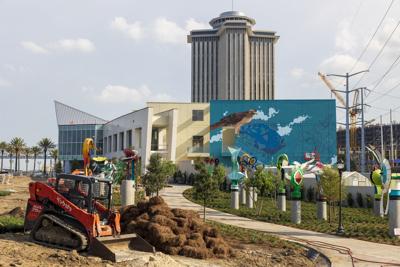The reopening of the revamped Aquarium of the Americas, now half of a joint attraction that includes the relocated Audubon Insectarium, marks a big bet that the Audubon Nature Institute is placing on the French Quarter’s waterfront.
The combined facility, which underwent eight months of construction at a cost of $41 million, is a sign of the times. The insectarium now occupies the aquarium’s old IMAX Theater, once a major draw but less so since local movie theaters added their own giant screens.
It’s also part of an ongoing effort to more closely connect New Orleans to its greatest natural asset, the Mississippi River.
And it marks an important step in the institute’s recovery from the COVID-19 pandemic, after a full closure and subsequent partial reopening that saw a slump in attendance and employment.
Visitors who buy tickets to both wings will see a mix of the new — some cool multi-media features and a “living wall” up the side of the two-story entrance — and the familiar. On the insectarium side, the stars include vibrantly hued residents of the newly built butterfly garden and some great big — but also beautiful — beetles. The aquarium’s dramatically lit jellyfish and elegant stingrays highlight its offerings. And there are crawfish on both sides of the building, for whatever that says about Louisiana's favorite "bug."
A more central question is what the reopening means for the institute. Audubon CEO and President Ron Forman said he learned after the BP spill that the way to come back from disaster isn’t just to rebuild, but to build back better.
In this case, that means having a plan to return to full attendance and fuller employment next year.
Next up is a project connecting Woldenberg Park in the Quarter to the downriver Crescent Park, but that’s for later.
For today, we join the Audubon Institute in celebrating the latest stage in its evolution.

